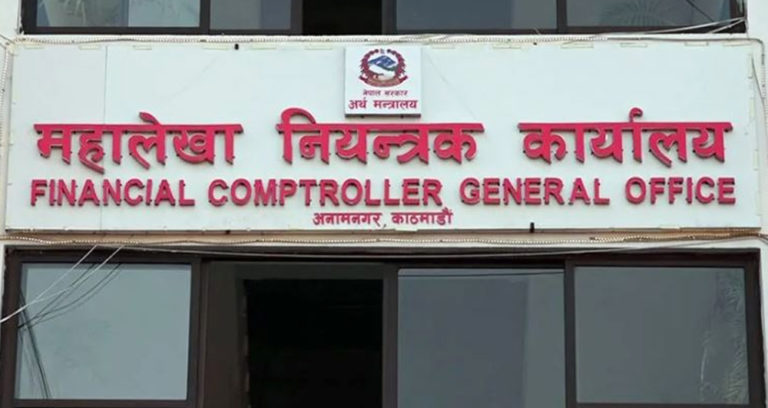Resilience Tested Financial sectors brace for impact following critical news today amid fears of esc
- आइतवार, मंसिर १, २०८२

- Resilience Tested: Financial sectors brace for impact following critical news today amid fears of escalating inflation and geopolitical instability.
- The Impact on Equity Markets
- Regional Variations in Equity Market Performance
- Fixed Income and the Rising Interest Rate Environment
- The Role of Central Bank Policy
- Commodities as an Inflation Hedge
- Analyzing the Performance of Different Commodities
- The Outlook for Financial Stability
Resilience Tested: Financial sectors brace for impact following critical news today amid fears of escalating inflation and geopolitical instability.
The financial landscape is currently navigating a period of heightened uncertainty. Recent news today regarding escalating inflation and intensifying geopolitical instability has sent ripples through global markets, prompting concerns about potential economic slowdowns and increased volatility. Central banks are under pressure to address inflation without triggering a recession, a delicate balancing act with potentially far-reaching consequences. Businesses and investors are closely monitoring these developments, adjusting their strategies accordingly in an effort to mitigate risk and preserve capital. The interconnected nature of the global economy means that disruptions in one region can quickly spread, impacting financial sectors worldwide
The Impact on Equity Markets
Equity markets have experienced considerable turbulence in response to the prevailing economic climate. Investors are demonstrating increased risk aversion, leading to a sell-off in certain sectors, particularly those sensitive to interest rate changes. Technology stocks, often considered growth investments, have been especially vulnerable, as higher interest rates diminish the present value of future earnings. Conversely, defensive stocks, such as utilities and consumer staples, have exhibited relative resilience, as demand for these essential goods and services tends to remain stable even during economic downturns. The overall outlook for equity markets remains clouded by uncertainty, with analysts offering divergent predictions.
Understanding sector-specific reactions is critical for informed investment decisions. The following table illustrates the performance of key sectors in the face of rising inflation and geopolitical tensions:
| Technology | -15% | High |
| Healthcare | -5% | Moderate |
| Consumer Staples | 2% | Low |
| Energy | 10% | High |
| Financials | -8% | Moderate |
Regional Variations in Equity Market Performance
The impact of current events isn’t uniform across all regions. The United States equity market has shown a degree of resilience, supported by strong corporate earnings in some sectors. However, Europe is facing a more significant challenge due to its proximity to the ongoing geopolitical conflict and its greater reliance on imported energy. Emerging markets are also particularly vulnerable, as they often lack the financial buffers to withstand significant economic shocks. Currency fluctuations add another layer of complexity, impacting the returns for international investors. The disparity in regional performance highlights the importance of diversification and careful consideration of geographical risk factors.
These varying conditions have prompted a reassessment of global investment strategies. Portfolio managers are increasingly favoring assets that offer protection against inflation and geopolitical risk, such as commodities and precious metals. Active management strategies, which involve frequent adjustments to portfolio allocations, are gaining traction as investors seek to capitalize on short-term market opportunities and mitigate potential losses.
Fixed Income and the Rising Interest Rate Environment
The fixed income market is undergoing a significant transformation as central banks aggressively raise interest rates to combat inflation. Bond yields have increased sharply, leading to a decline in bond prices. This inverse relationship between bond yields and prices poses a challenge for bondholders, as the value of their investments erodes. Investors are carefully evaluating the risks and opportunities presented by the changing interest rate environment. The yield curve, which plots the yields of bonds with different maturities, is closely watched as a potential indicator of economic recession. An inverted yield curve, where short-term yields exceed long-term yields, has historically been a reliable predictor of economic downturns.
Navigating the complex fixed-income landscape requires a nuanced understanding of various factors, including credit risk, duration, and liquidity. Here’s a list outlining considerations for fixed income investing in the current environment:
- Shorten Duration: Reduce exposure to longer-term bonds, which are more sensitive to interest rate increases.
- Diversify Credit Quality: Include a mix of government bonds, corporate bonds, and high-yield bonds to manage credit risk.
- Consider Floating Rate Notes: These bonds offer interest rates that adjust with prevailing market rates, providing some protection against rising rates.
- Monitor Inflation Expectations: Track inflation-indexed bonds, which offer protection against inflation erosion.
The Role of Central Bank Policy
Central bank policy is the primary driver of the current shifts in the fixed income market. The Federal Reserve in the United States, the European Central Bank, and the Bank of England have all embarked on aggressive tightening cycles, raising interest rates at a rapid pace. This tightening is intended to curb inflation by reducing demand and cooling down the economy. However, the speed and magnitude of these rate hikes have raised concerns about the potential for a recession. Central banks are facing a delicate balancing act between controlling inflation and preserving economic growth. Their future policy decisions will significantly impact the trajectory of the bond market and the broader economy.
Forward guidance from central banks, which provides insights into their future policy intentions, is closely scrutinized by investors. Any signaling of a potential shift in course, such as a pause in rate hikes, can trigger significant market reactions. Maintaining credibility and effectively communicating policy intentions are crucial for central banks to manage expectations and maintain market stability.
Commodities as an Inflation Hedge
Commodities, such as oil, gold, and agricultural products, have emerged as a popular hedge against inflation. As prices for essential goods and services rise, the value of commodities tends to increase, providing a buffer against the erosion of purchasing power. Supply chain disruptions and geopolitical tensions have exacerbated inflationary pressures in commodity markets, further boosting prices. Investors are allocating a portion of their portfolios to commodities as a way to diversify their holdings and protect themselves from inflation. However, commodity markets are notoriously volatile, and prices can fluctuate dramatically in response to supply and demand shocks.
Understanding the dynamics of commodity markets is essential for informed investment decisions. Here’s a breakdown of the key factors influencing commodity prices:
- Supply and Demand: The fundamental driver of commodity prices.
- Geopolitical Events: Conflicts and political instability can disrupt supply chains and impact prices.
- Weather Patterns: Adverse weather conditions can affect agricultural output and drive up food prices.
- Currency Fluctuations: A weaker dollar can make commodities more attractive to international buyers.
- Speculative Activity: Trading activity by investors can amplify price movements.
Analyzing the Performance of Different Commodities
Not all commodities perform equally well in an inflationary environment. Energy commodities, such as oil and natural gas, have seen significant price increases due to supply disruptions and heightened demand. Precious metals, particularly gold, are traditionally viewed as safe-haven assets and tend to perform well during times of economic uncertainty. Agricultural commodities, such as wheat and corn, have experienced price volatility due to weather-related production issues and geopolitical tensions. Investors should carefully consider the specific characteristics of each commodity before making investment decisions. Diversification across different commodities can help mitigate risk and enhance potential returns.
The following table highlights the year-to-date performance of major commodities:
| Crude Oil | 25% |
| Gold | 8% |
| Wheat | 15% |
| Corn | 10% |
| Natural Gas | 40% |
The Outlook for Financial Stability
The current confluence of factors – high inflation, rising interest rates, and geopolitical instability – poses a significant threat to financial stability. The potential for a recession looms large, and the risk of systemic shocks to the financial system is elevated. Governments and regulators are closely monitoring these developments, implementing measures to mitigate risk and safeguard the financial system. Early intervention and proactive risk management are crucial to prevent a financial crisis. The resilience of the financial system will ultimately determine the severity of the economic fallout.
Stress tests, which assess the ability of financial institutions to withstand adverse economic scenarios, are being conducted to identify vulnerabilities and ensure adequate capital buffers. International cooperation and coordination are essential to address cross-border risks and prevent the spread of financial contagion. Vigilance, preparedness, and decisive action will be key to navigating the challenges ahead and preserving financial stability.

Érzékelhető izgalom minden percben sportesemények, kaszinó játékok és nyerő kombinációk a ggbet hu k

Aventure-se na trilha frenética e veja se consegue guiar a galinha até o ovo dourado em jogo chicken













